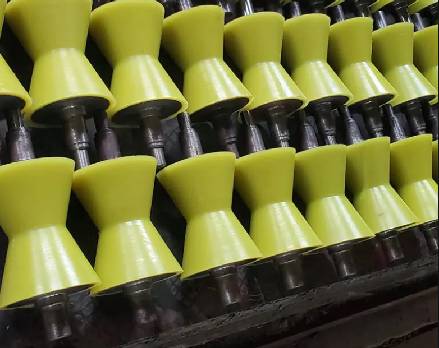 Afrikaans
Afrikaans  Albanian
Albanian  Amharic
Amharic  Arabic
Arabic  Armenian
Armenian  Azerbaijani
Azerbaijani  Basque
Basque  Belarusian
Belarusian  Bengali
Bengali  Bosnian
Bosnian  Bulgarian
Bulgarian  Catalan
Catalan  Cebuano
Cebuano  Corsican
Corsican  Croatian
Croatian  Czech
Czech  Danish
Danish  Dutch
Dutch  English
English  Esperanto
Esperanto  Estonian
Estonian  Finnish
Finnish  French
French  Frisian
Frisian  Galician
Galician  Georgian
Georgian  German
German  Greek
Greek  Gujarati
Gujarati  Haitian Creole
Haitian Creole  hausa
hausa  hawaiian
hawaiian  Hebrew
Hebrew  Hindi
Hindi  Miao
Miao  Hungarian
Hungarian  Icelandic
Icelandic  igbo
igbo  Indonesian
Indonesian  irish
irish  Italian
Italian  Japanese
Japanese  Javanese
Javanese  Kannada
Kannada  kazakh
kazakh  Khmer
Khmer  Rwandese
Rwandese  Korean
Korean  Kurdish
Kurdish  Kyrgyz
Kyrgyz  Lao
Lao  Latin
Latin  Latvian
Latvian  Lithuanian
Lithuanian  Luxembourgish
Luxembourgish  Macedonian
Macedonian  Malgashi
Malgashi  Malay
Malay  Malayalam
Malayalam  Maltese
Maltese  Maori
Maori  Marathi
Marathi  Mongolian
Mongolian  Myanmar
Myanmar  Nepali
Nepali  Norwegian
Norwegian  Norwegian
Norwegian  Occitan
Occitan  Pashto
Pashto  Persian
Persian  Polish
Polish  Portuguese
Portuguese  Punjabi
Punjabi  Romanian
Romanian  Russian
Russian  Samoan
Samoan  Scottish Gaelic
Scottish Gaelic  Serbian
Serbian  Sesotho
Sesotho  Shona
Shona  Sindhi
Sindhi  Sinhala
Sinhala  Slovak
Slovak  Slovenian
Slovenian  Somali
Somali  Spanish
Spanish  Sundanese
Sundanese  Swahili
Swahili  Swedish
Swedish  Tagalog
Tagalog  Tajik
Tajik  Tamil
Tamil  Tatar
Tatar  Telugu
Telugu  Thai
Thai  Turkish
Turkish  Turkmen
Turkmen  Ukrainian
Ukrainian  Urdu
Urdu  Uighur
Uighur  Uzbek
Uzbek  Vietnamese
Vietnamese  Welsh
Welsh  Bantu
Bantu  Yiddish
Yiddish  Yoruba
Yoruba  Zulu
Zulu Understanding the Function of Belt Drive Idler Pulleys in Mechanical Systems
Understanding Belt Drive Idler Pulleys
Belt drive systems are ubiquitous in various mechanical applications, from automotive engines to industrial machinery. At the heart of these systems lies the belt drive idler pulley, an essential component that plays a crucial role in ensuring the efficient operation of the belt drive mechanism.
What is a Belt Drive Idler Pulley?
An idler pulley is a simple but vital mechanical device that serves multiple functions in a belt drive system. Typically made from materials like steel or plastic, these pulleys are designed to guide and maintain the tension of the drive belt. The idler pulley is not directly driven by the engine or motor; instead, it alters the path of the belt, providing additional contact points for the belt to grip and thus improving power transmission.
Functions of the Idler Pulley
1. Maintaining Tension One of the primary roles of an idler pulley is to maintain appropriate tension in the belt. Proper tension is critical to ensure that the belt does not slip off the pulleys or wear prematurely. If the tension is too loose, it can lead to inefficient power transfer and possible damage to both the belt and the driven components. An idler pulley helps in achieving and stabilizing the correct tension, which enhances overall performance and longevity.
2. Guiding the Belt The idler pulley also serves to guide the belt along its intended path. By changing the direction of the belt, the idler pulley ensures that the belt remains aligned with the other pulleys in the system. This alignment is crucial for preventing misalignment issues that could lead to increased wear and mechanical failure.
3. Reducing Vibration and Noise Idler pulleys can also help in minimizing vibrations and noise in a belt drive system. By providing additional support and stabilizing the belt, idler pulleys can dampen the vibrations that might otherwise be transmitted through the system. This not only leads to quieter operation but also reduces fatigue on other components.
belt drive idler pulley

4. Improving Efficiency By ensuring proper tension, alignment, and smooth operation, idler pulleys contribute to the overall efficiency of the belt drive system. They help maximize power transfer from the motor to the driven equipment, minimizing energy losses associated with slipping or misalignment.
Application Areas
Belt drive idler pulleys have a wide range of applications across various industries. In automotive applications, they are common in serpentine belt systems, where they manage the belt driving various components like the alternator, water pump, and air conditioning compressor. In industrial machinery, idler pulleys are often used in conveyor systems and manufacturing equipment to enhance the functionality and reliability of the belt-driven systems.
Maintenance Considerations
Like all mechanical components, idler pulleys require periodic inspection and maintenance. Signs of wear, such as cracked or frayed belts, unusual noises, or signs of misalignment, should be addressed promptly. Regular checks can prevent more significant issues down the line, ensuring that both the idler pulley and the belt drive system operate effectively.
Conclusion
Belt drive idler pulleys may seem like minor components in the grand scheme of mechanical systems, but their importance cannot be overstated. From maintaining belt tension and guiding the belt to improving system efficiency and reducing noise, they play a vital role in the reliability and performance of belt-driven machinery. Understanding their functions and care will contribute to smoother operations, longevity, and enhanced performance in various applications.
-
Wing Pulley Conveyor for Conveyor Belt MaintenanceNewsJun.16,2025
-
Self Cleaning Spiral Idler for Conveyor DesignNewsJun.16,2025
-
Pulley Lagging for Conveyor Belt AlignmentNewsJun.16,2025
-
Impact Idlers Used in Belt Conveyor for PerformanceNewsJun.16,2025
-
Ceramic Lagging Conveyor Pulley for Conveyor Belt SystemsNewsJun.16,2025
-
Belt Conveyor Idler for Heavy-Duty ApplicationsNewsJun.16,2025





























